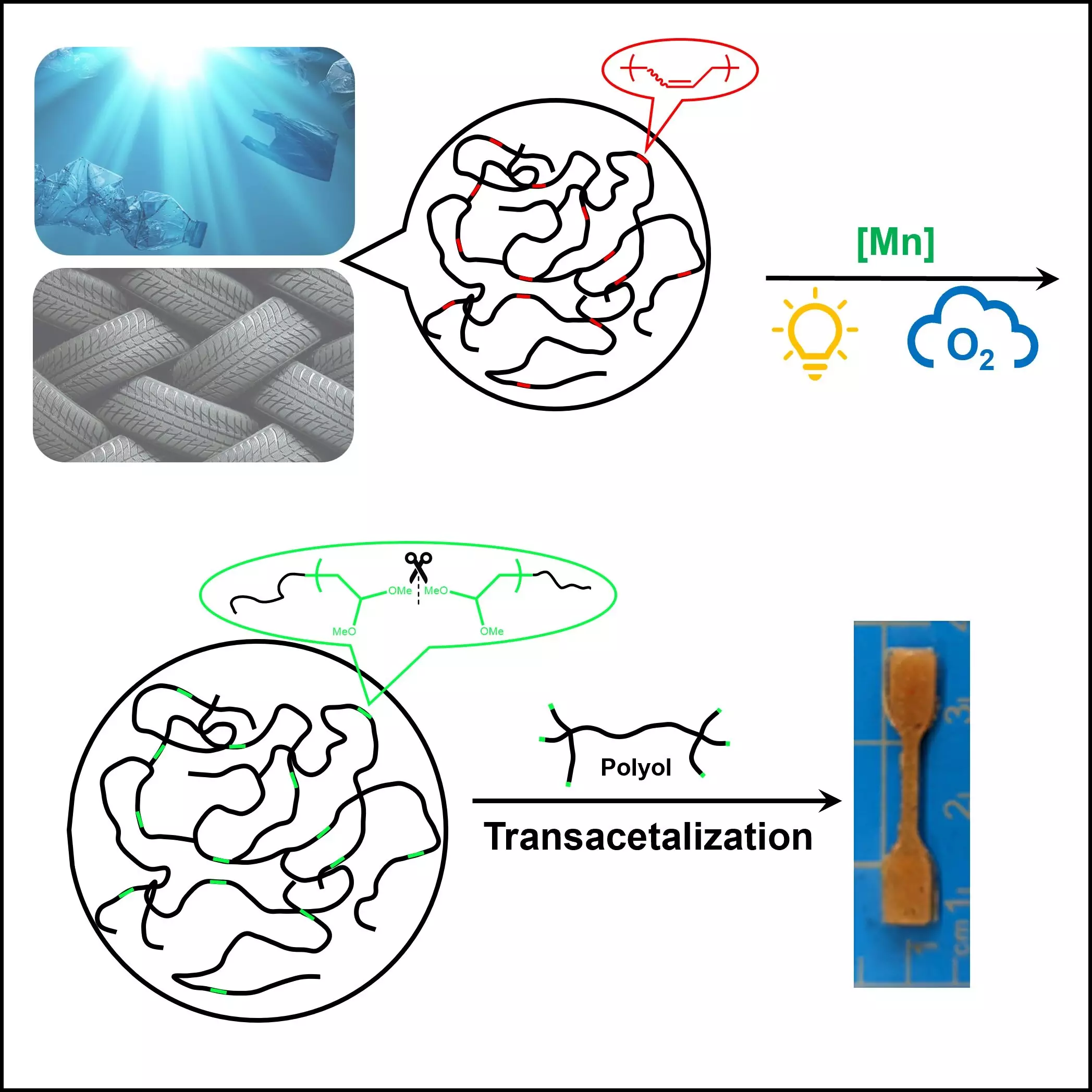Over the decades, our dependence on polymers—especially plastics—has spiraled out of control, contributing to a staggering 8.3 billion metric tons of waste that pollutes our planet. The legacy of post-war industrial growth has led not only to a remarkable range of products but also to an alarming environmental crisis. The statistics are jarring: more than 90% of these materials end up either discarded or incinerated, with only around 600 million metric tons achieving successful recycling. This disheartening reality underscores the pressing need for innovative recycling solutions to combat climate change and environmental degradation.
Scientific Advancements in Polymer Decomposition
A groundbreaking study by Dr. Junpeng Wang and colleagues at The University of Akron illuminates a promising pathway for overcoming the hurdles associated with polymer recycling. The new technique employs the combined power of oxygen and light to facilitate the degradation of unsaturated polymers—such as rubber and specific plastics—effectively transforming waste into reusable material. Traditional recycling methods, including ozonolysis and permanganate oxidation, have often been limited by time-consuming and energy-intensive processes that produce harmful by-products. These obstacles highlight the necessity for more environmentally friendly and efficient methods in polymer breakdown.
The Promise of Controlled Degradation
Dr. Wang’s innovative research offers a refreshing perspective on polymer recycling by utilizing a controlled catalytic process activated by light. This eliminates the need for extreme temperatures and high-pressure conditions, rendering it both practical and scalable. The strategic introduction of unsaturation into the hydrocarbon backbone of resistant polymers enhances their reactivity, opening up exciting avenues for their transformation. Unlike traditional methods that consume excessive resources and create toxic waste, this approach paves the way for sustainable practices that align with global ecological goals.
Environmental Implications and Future Directions
By significantly improving our understanding of polymer degradation, this research serves as a pivotal entry point for addressing the much-criticized waste crisis. The ability to break down polymers with O2—a force of nature in abundance—highlights an essential transition towards green chemistry practices in the materials industry. Dr. Wang and his team’s findings not only promise a cleaner method of recycling but also challenge prevailing paradigms by proving that efficient ecological solutions are indeed achievable. This could potentially reshape our approach to waste management and foster a circular economy where resources are perpetually reused rather than discarded.
Beyond Academia: Industry Adoption and Global Impact
The implications of this study extend far beyond the laboratory. For industries wrestling with the burden of plastic waste, Dr. Wang’s methodology offers an actionable roadmap to integrate sustainable practices into their operations. As global populations swell and the demand for materials accelerates, the significance of scalable recycling methods cannot be overstated. Manufacturers and policymakers must seize upon these findings to pivot from reactive waste management strategies towards proactive solutions that prioritize environmental health and sustainability.
In a world grappling with the consequences of plastic pollution, innovation such as that demonstrated by Wang and his collaborators represents not just a scientific triumph, but a vital catalyst for change in the fight for a cleaner, healthier planet.

